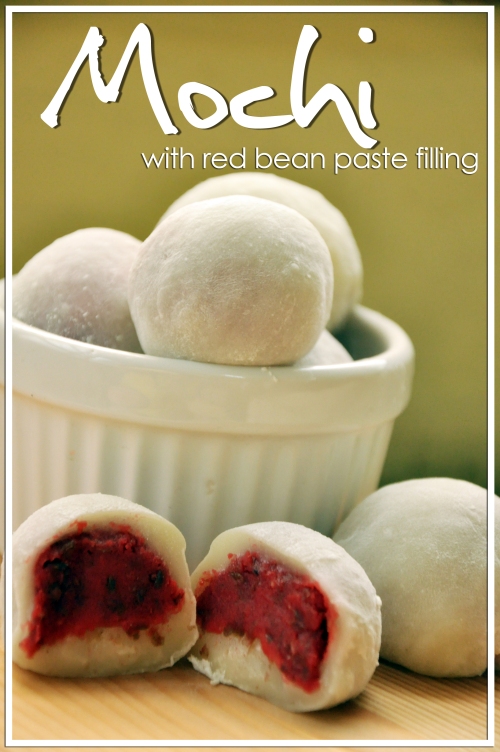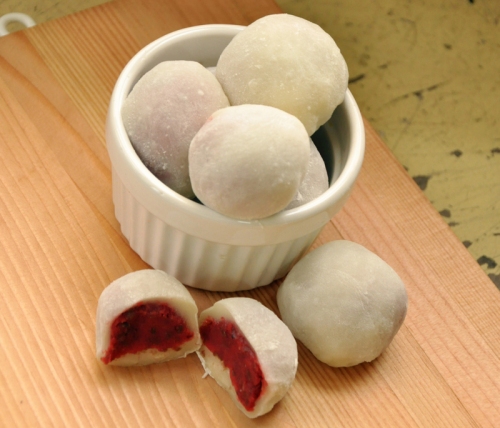I’ve been semi-obssessed (if there’s such a thing) with mochi since highschool. I didn’t even know what it was back then. From what I remember, I once saw in the television this lady preparing a dessert with some kind of flour and cream, then cooking it in the microwave. The glutinous ball product looked enticing enough to eat and I’ve been wanting to make one since then. Of course, I was in the province, so there was no mochiko (the type of flour they used) and we also didn’t have a microwave oven back then, so I just forgot about it.
Fast forward to present time, I saw a box of chocolate mochi with peanut butter filling at the supermarket, and so the desire to make one which was held back years ago suddenly surged back. Months back, I was researching how to make mochi. I had my doubts with the microwave technique coz I was not so sure if it would ‘cook’ the flour so I searched for other options. I found one online which requires steaming the mochi paste instead of microwaving it. Sadly, it yielded an undesirable mochi, it was too oily and the mochi came out dry. There was also a baking technique but that resulted to a cassava cake-like consistency. So I gave up and totally forgot about it.
Then just last Friday, my officemates and I were talking about mochi ice cream and I remembered my unfinished conquest to mochi-land. And this time I thought of giving the microwave thingie a try. The result, well, I couldn’t be any happier. I should have trusted that lady! 🙂
For those who are unfamiliar with mochi, mochi is a Japanese rice cake made of glutinous rice. Traditionally prepared by pounding rice into a paste, it is now commonly prepared by using rice flour. Popular variations of mochi include daifuku which is a round mochi stuffed with sweet filling and mochi ice cream.
In the Philippines, the closest food that I could liken to mochi is tikoy. Both made from glutinous rice, tikoy and mochi almost have the same consistency. If we dig to a more local food, I’d say the espasol from Laguna and the Royal Bibingka from Ilocos are also quite similar.
Here’s my recipe:

